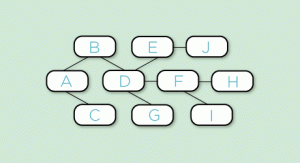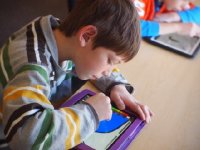Project-Based Learning and Gamification: Two Great Tastes That Go Great Together
Your content has been saved!
Go to My Saved Content.Times of flux should signal the A-OK for some experimentation in schools. My own school, for instance, is encouraging more PBL.
In my room, we've got my advocacy unit on superheroes. Meanwhile, a fundraiser is launching in a sixth-grade room, a seventh-grade science class is doing a national parks tie-in to the upcoming Rose Bowl Parade theme, and a living museum is underway in some history teachers' rooms.
The other big PBL experiment is one that will hopefully create a universal academic experience for many students. Based on curriculum I developed for my new STEM-focused PBL book, I'm guiding students toward an Invention Convention, and I invited any interested teacher to participate.
As a result, I now have approximately 500 students from every subject area ready to begin moving through this unit. But with such an enthusiastic response to the offer comes a happy problem to solve.
Individualized Pacing through a PBL Unit
How do I individualize each student's learning process and pacing? After all, Jose could be brought into my 1:1 classroom by both his language arts teacher and his math teacher, while Christina might only be brought in by her science teacher.
I began thinking, therefore, about how gamification could potentially solve this challenge. While I don't tend to stress gold stars and party points, I realized that "leveling up" might be ideal for this kind of experiment.
I did my research and settled on a company called Rezzly (previously known as 3DGameLabs). It's currently in beta mode and specializes in gamifying higher education and individualized teacher PD. I'm using it, however, to implement the lessons through my middle school PBL unit.
As I learned the program, I began speaking with Lisa Dawley, the CEO of Rezzly. She and her team answered my many questions (and there were many) to help me lesson plan in a very different way.
How to Prep for a Gamified PBL Unit
Prepping for a gamified unit is very different than prepping for your traditional, linear model. Here are some things I learned:
1. Lesson Plan Using a Web. Gamifying my PBL unit meant I had to plan a web of lessons, not linear ones. I used Popplet to indicate the order lessons became available and which ones were prerequisites to open up next levels of learning. My lesson plans looked a little like this:

So lesson A starts a student on their journey of learning. Kids submit their assignment, and I approve it (which then opens up lessons B and C). B, once approved, opens up D, and so on.
Each lesson incorporates different modalities, like a video or customized screencast, or an activity ranging from formal writing to a simple contribution on a Padlet page or Todaysmeet feed.
And because it's online -- supported by classroom meetings -- the unit doesn't shut down once the bell rings. Students can push through the lessons at their own pace.
2. Plan for Tons of Student Choice. I gave plenty of choice in how students progressed through the unit. Students research, develop pitches, and build 3D prototypes, while crowdsourcing advice about slogans, names, and price points, as well. But they aren't necessarily working in the same order as their neighbor.
They are given resources to learn about basic engineering, designing, and writing, and the scaffolded lessons help them make bite-sized decisions leading up to the big convention in May. But they are doing it along a personalized pathway.
Dawley stresses that gamifying a PBL unit encourages student choice because:
3. Reward for Both Content Proved and Skills Learned. I developed checkpoints with which to reward students for both content learned and skills acquired. Sure, the student gets a grade on a formal writing assignment, which I score, but they also receive badges for accomplishing a task efficiently within a certain amount of days, which is tracked by Rezzly, or in participating in peer-created surveys.
This too had impact on my lesson design. Dawly believes gamification encourages the teacher "to think not only about curricular goals but also achievements for social skills such as 'helped a friend' or 'found and reported a mistake in the quest...quest chains and achievements give the teacher a mechanism for developing those strands of deeper learning found in PBL."
My rewards reflect this new kind of encouragement. Students can earn a "Critical Collaborator" award to a "Rube Goldberg Badge." In amongst it all are assignments that are formally graded. After all, different incentives work for different students.
4. Pilot First Through the Eyes of a Student. I piloted ahead of time using a small subset of students. Six ELA Honors students and eleven students in special education are piloting the lessons and giving me feedback. By working with a small group, I get to see if I've allocated points incorrectly or if a badge doesn't get awarded when it should.
This is a time for experimentation with enthusiasm. Develop the lessons you know will engage and educate. Take risks, and play with the curriculum.
